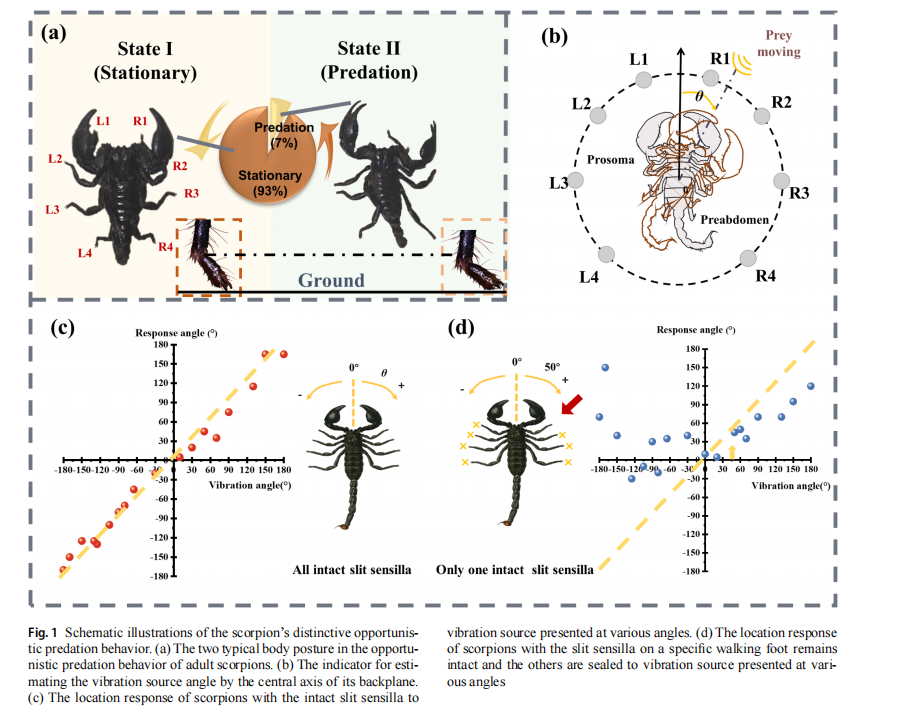Journal of Bionic Engineering (2025) 22:727–738 https://doi.org/10.1007/s42235-025-00661-4
A Biomimetic Stress Field Modulation Strategy Inspired by Scorpion Compound Slit Sensilla Enabled High-Accuracy and Low-Power Positioning Sensor for Identifying the Load Incident Angles
Junqiu Zhang1 · Yu Chen1,2 · Haoran Li1 · Jiqi Gao1,2 · Xiangbo Gu1 · Jiachao Wu1 · Xiaojing Qin1 · Kejun Wang3 · Bin Zhu4 · Daobing Chen5 · Tao Sun1 · Jianhua Fan1,6 · Zhiwu Han1,2 · Luquan Ren1,2
1 Key Laboratory of Bionic Engineering, Ministry of Education, Jilin University, Changchun 130022, People’s Republic of China
2 Institute of Structured and Architected Materials, Liaoning Academy of Materials, Shenyang 110167, China
3 Jiangsu Provincial Key Laboratory of Advanced Robotics, Soochow University, Suzhou 215123, People’s Republic of China
4 School of Mechanical Engineering Sciences, University of Surrey, Guildford GU2 7XH, UK
5 The Institute of Technological Science, Wuhan University, Wuhan 430072, China
6 School of Mechanical and Aerospace Engineering, Jilin University, Changchun 130025, China
Abstract
Numerous arthropods evolve and optimize sensory systems, enabling them to effectively adapt complex and competitive habitats. Typically, scorpions can precisely perceive the prey location with the lowest metabolic rate among invertebrates. This biological phenomenon contrasts sharply with engineered systems, which generally associates high accuracy with substantial energy consumption. Inspired by the Scorpion Compound Slit Sensilla (SCSS) with a stress field modulation strategy, a bionic positioning sensor with superior precision and minimal power consumption is developed for the first time, which utilizes the particular Minimum Positioning Units (MPUs) to efficiently locate vibration signals. The single MPU of the SCSS can recognize the direction of collinear loads by regulating the stress field distribution and further, the coupling action of three MPUs can realize all-angle vibration monitoring in plane. Experiments demonstrate that the bionic positioning sensor achieves 1.43 degrees of angle-error-free accuracy without additional energy supply. As a proof of concept, two bionic positioning sensors and machine learning algorithm are integrated to provide centimeter (cm)- accuracy target localization, ideally suited for the man-machine interaction. The novel design offers a new mechanism for the design of traditional positioning devices, improving precision and efficiency in both the meta-universe and real-world Internet-connected systems.
Keywords Scorpion Compound Slit Sensilla (SCSS) · Vibration Source · Stress Field Modulation Strategy · High-accuracy and low-power Positioning Sensor · Minimum Positioning Unit (MPU)

Copyright © 2025 International Society of Bionic Engineering All Rights Reserved
吉ICP备11002416号-1









